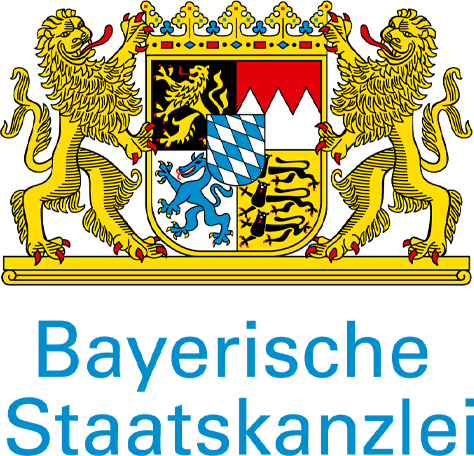AARTO Acts: High Court says national government must respect the autonomy of provinces and municipalities
In Organisation Undoing Tax Abuse v Minister of Transport and Others, the High Court once again put a stop to the implementation of a national law that encroaches on the exclusive competencies of provinces and municipalities in a way not permitted by the Constitution.
Spheres of government have ‘distinct’ functions
Section 40(1) of the Constitution states that the national, provincial and local spheres of government are ‘distinct’, ‘interdependent’ and ‘interrelated’. ‘Distinct’ in this context entails a ‘distinct’ set of powers and responsibilities allocated to each of sphere of government. The High Court reasoned that the ‘distinctiveness of the different powers lies in the level at which a particular power is exercised’. Schedule 4 of the Constitution lists matters which are within the concurrent competence of national government and provinces while Schedule 5 lists functional areas which are within the exclusive competence of provinces. Part B of Schedules 4 and 5 list matters which are of exclusive competence of municipalities. Therefore, the national government may not legislate on matters which fall within the exclusive competence of provinces and municipalities.
There are however limited and clearly stipulated exceptions when the national and provincial governments may encroach on the functional area of a lower sphere of government. Section 44(2) empowers the national Parliament to enact legislation in respect of functional areas falling within the exclusive competence of provinces when it is necessary to promote national interest, for example. The national government may also encroach on provincial terrain in terms of section 100 of the Constitution when a province fails to undertake its executive constitutional and legislative obligations. Both the national and provincial governments have similar powers over municipalities in terms of section 139 of the Constitution. They can also enact framework legislation to guide the exercise of municipal functions.
Since the adoption of the Constitution in 1996, there is, however, a tendency from higher sphere(s) of government to encroach on the terrain of lower sphere(s) of government through executive and/or legislative action(s) outside of what is constitutionally permissible. The latest legislative act involves an amendment to a national piece of legislation, the Administrative Adjudication of Road Traffic Offences Act of 1998 (AARTO Act). The Act was amended by the Administrative Adjudication of Road Traffic Offences Amendment Act of 2019 (AARTO Amendment Act). The Organisation Undoing Tax Abuse (OUTA), a civil society organisation that has opposed the AARTO Acts for many years, challenged before the High Court the constitutionality of both the main Act and the Amendment Act.
Administrative Adjudication of Road Traffic Offences Amendment Act of 2019
The process of coming up with a national demerit system to deal with increased traffic and road-related infringements started as far back as 2013. The AARTO Amendment Bill was introduced in Parliament in 2015 and passed by the National Assembly in 2017. It became law in 2019 after it had been assented to by the President. The Amendment Act seeks to create a single national traffic system of road traffic management. This system, overseen by the national government is:
‘based on demerit points which are incurred for traffic offences or infringements. The Amendment Act shifts from the default system of judicial enforcement of traffic laws through criminal law to a compulsory system of administrative enforcement of traffic laws through administrative tribunals, administrative fines and demerit points system’ [para 11]’.
Section 29A of the Amendment Act classifies all contraventions of road and traffic laws as infringements under the exclusive jurisdiction of the Road Traffic Infringement Authority and Appeals Tribunal. These two bodies are accountable to the national Minister responsible for transport, who also determines offences under the Act. Section 27 of the Amendment Act provides for various ways in which infringement notices can be served on the infringer such as postage and electronic service. In a nutshell, the AARTO and Amendment Act establishes a legal regime that takes away the enforcement of all road and traffic laws from provinces and municipalities to the national government. This regime, together with the demerit of points, was rolled out in phases from 1 July 2021 and scheduled to be fully operational nationwide in July 2022.
Arguments of OUTA
The crux of OUTA’s argument is based on the constitutional division of functions between the three spheres of government as provided for in Schedules 4 and 5 of the Constitution and related provisions. OUTA argued that the AARTO and Amendment Acts encroach on the exclusive legislative competence of provinces namely ‘provincial roads and traffic’ as well as on the municipal competencies of ‘municipal roads’ and ‘traffic and parking’. It further contended that functional areas listed in Schedule 4 ought to be ‘interpreted as being distinct from and as excluding those competencies listed in Schedule 5’. As such, the national Parliament may not legislate on matters which the Constitution reserves for provinces. Similarly, ‘what is given to local government, cannot be taken away by the higher levels in the hierarchy namely provincial and thereafter national government’ [para 35]. Thus, OUTA submitted that by regulating road traffic and creating a single, national system to do so, the AARTO and the Amendment Acts, are unconstitutional and should be declared invalid. Last, OUTA contended that if AARTO and the Amendment Acts are not ‘capable of severance’, in other words, the ‘bad’ provisions in the Act could not be separated from the ‘good’ provisions without undermining the objects of the Acts, the Court should declare the Acts invalid in their totality.
Arguments of the national government
The national government argued that the AARTO and Amendment Acts regulate issues under the concurrent competence of national and provincial government – those under Part A of Schedule 4 – rather than matters under Schedule 5 of the Constitution. It submitted that ‘the legislative competence of national government is rooted in Part A of Schedule 4 and not in Schedule 5’. Thus, it was argued that section 44(2) which empowers the national government to enact laws on Schedule 5, Part A matters, when necessary, was not applicable. The national government brought to the Court’s attention the fact that 8 of the 9 provinces in the National Council of Provinces (the NCOP) supported the Amendment in terms of section 76 of the Constitution. This provision regulates the processing of Bills in Parliament that affects provinces and gives the NCOP significant powers over the legislative process relative to other Bills that do not affect provinces. Last, the national government submitted that should the Court rule in favour of OUTA it should suspend the declaration of invalidity for 24 months to enable Parliament to rectify the invalidity.
The decision of the Court
The High Court rejected national government’s argument that the AARTO and Amendment Acts regulate Schedule 4, Part A matters. The Court reasoned that functional areas listed in Part A of Schedule 5 must be ‘read to afford provinces exclusive legislative competence in respect of “provincial roads and traffic” and affording municipalities exclusive legislative competence in respect of “municipal roads” and “traffic and parking”’. In contrast, Part A of Schedule 4 gives concurrent competence to national and provincial governments over national roads and traffic regulation ‘but only to extent that they do not deal with matters falling under ‘provincial roads and traffic’, ‘municipal roads’ and ‘traffic and parking’ [para 36]. The Court reasoned that any alternative approach of interpreting the schedules ‘effectively deprives provincial and local government of legislative competence over a functional area which was reserved exclusively to those two government spheres’. This would then render these exclusive legislative and executive competencies meaningless. The Court concluded that only provinces may exercise the function ‘provincial roads and traffic’, and only municipalities, ‘municipal roads’ and ‘traffic and parking’ [para 39]. The Court, therefore, ruled that the ‘AARTO and Amendment Acts unlawfully intrude upon the exclusive executive and legislative competence of the local and provincial governments, respectively and as such the two Acts are unconstitutional’.
The Court stated that the fact 8 of the 9 provinces had supported the Amendment Act was irrelevant as the National Parliament was not competent to enact the AARTO and Amendment Acts in the first place. On the question of whether the offending provisions of the AARTO and the Amendment Acts could be severed, the Court found that AARTO and Amendment Acts provisions on provincial roads, provincial traffic, municipal roads, traffic and parking infringements are central to the creation of the single, national system for administrative enforcement of road traffic laws. The Court stated that if these provisions are invalid there is no use for the national government to set up the administrative machinery of the Agency and the Appeal Board given that the vast majority of road traffic infringements will fall outside of their jurisdiction. Thus, the Court declared all the provisions of the AARTO and the Amendment Acts unconstitutional and invalid.
Commentary
This judgment once again shows the appetite of the courts to stop any unconstitutional intrusion of provincial and/or local powers by the national government. The message is clear that all spheres of government may only assume what they have been given by the Constitution and nothing more. While there are functional overlaps between Schedule 4 and 5, and between Part A and B of these schedules, this does not necessarily mean that the competence of the three spheres also overlaps. In the Gauteng Development Tribunal case, the Constitutional Court held that ‘barring functional areas of concurrent competence, each sphere of government is allocated separate and distinct powers which it alone is entitled to exercise’ [para 56]. Section 41 of the Constitution requires that each sphere of government respects the constitutional division of powers and avoid encroaching on the functional or institutional integrity of government in another sphere. The High Court, in the ARRTO judgment, ruled that the national government contravened the Constitution. Will the national government appeal this judgement, and if it does, what are the chances of success of appeal?






